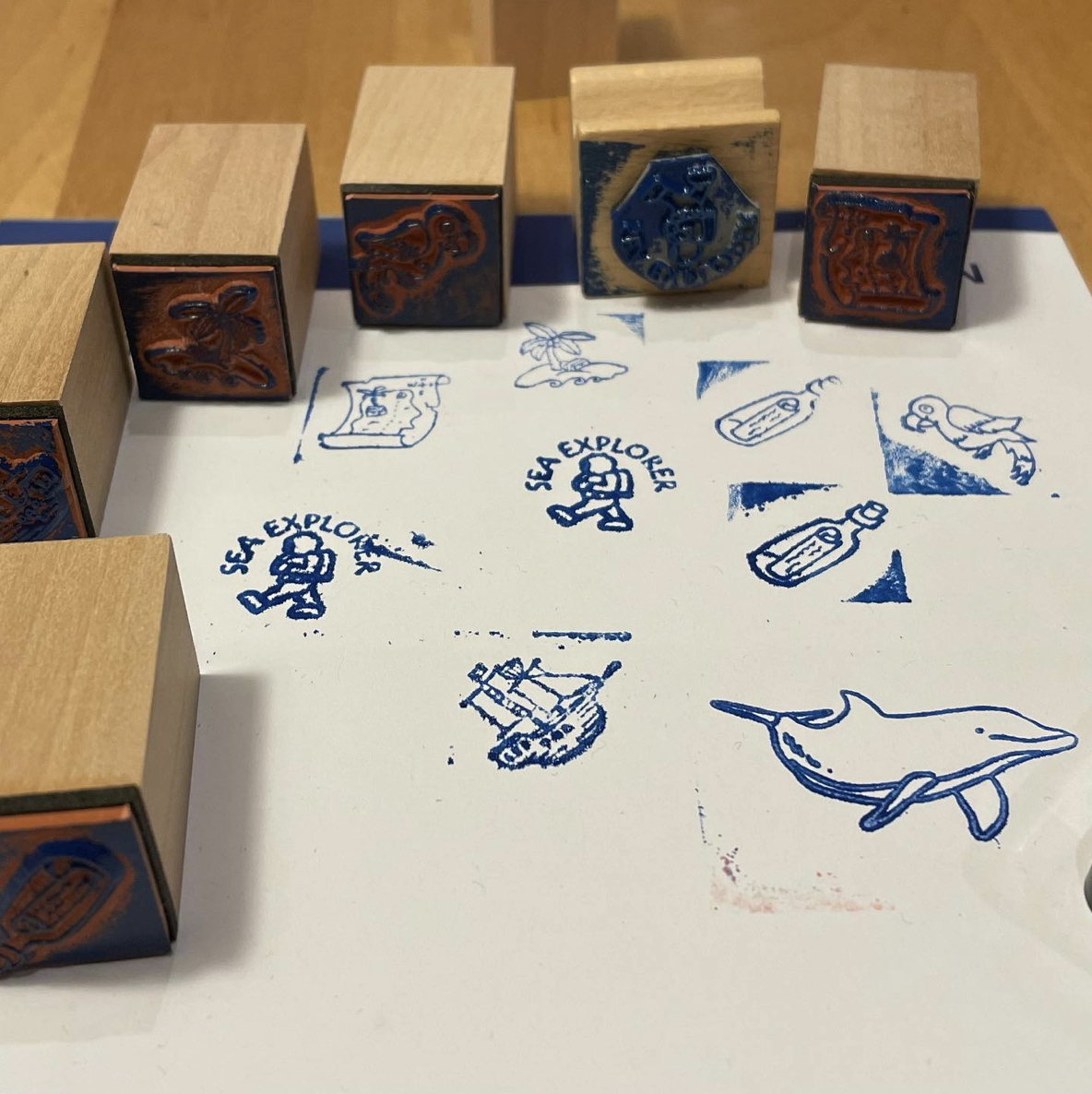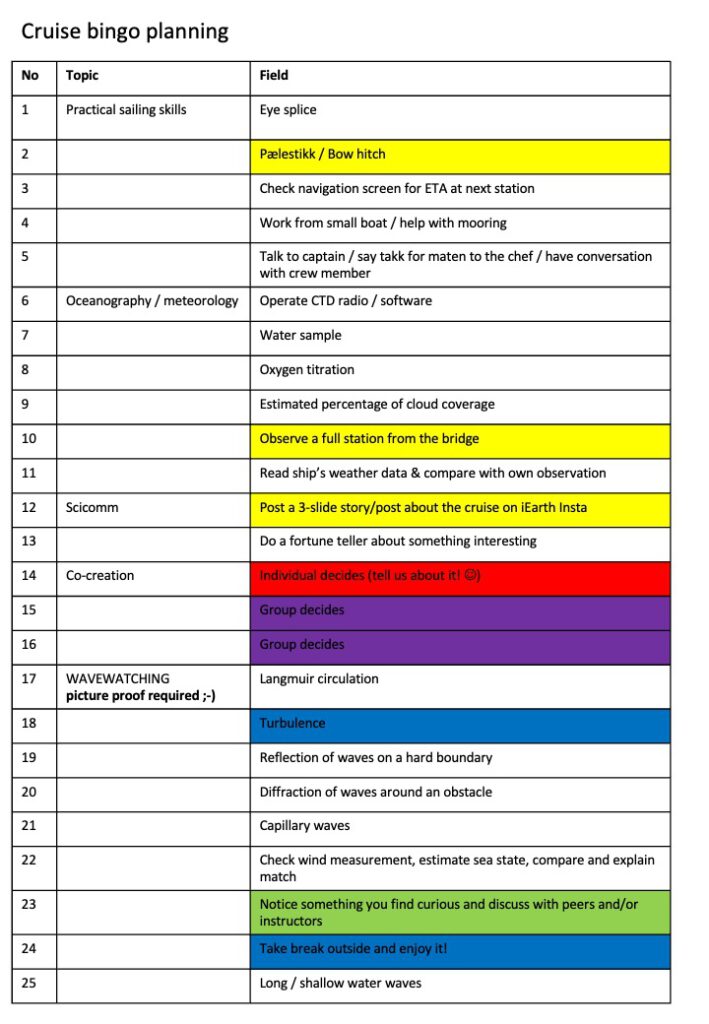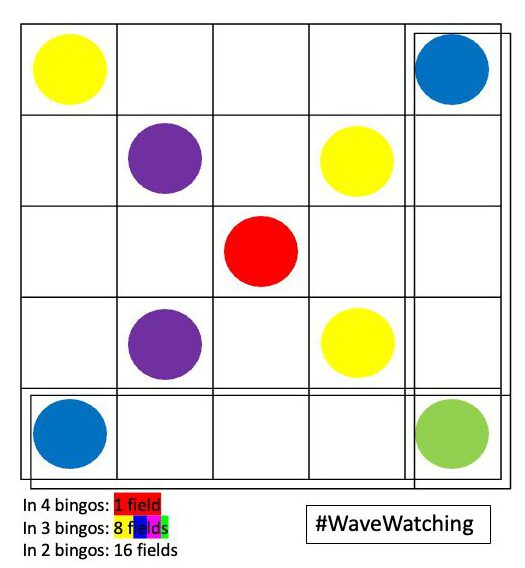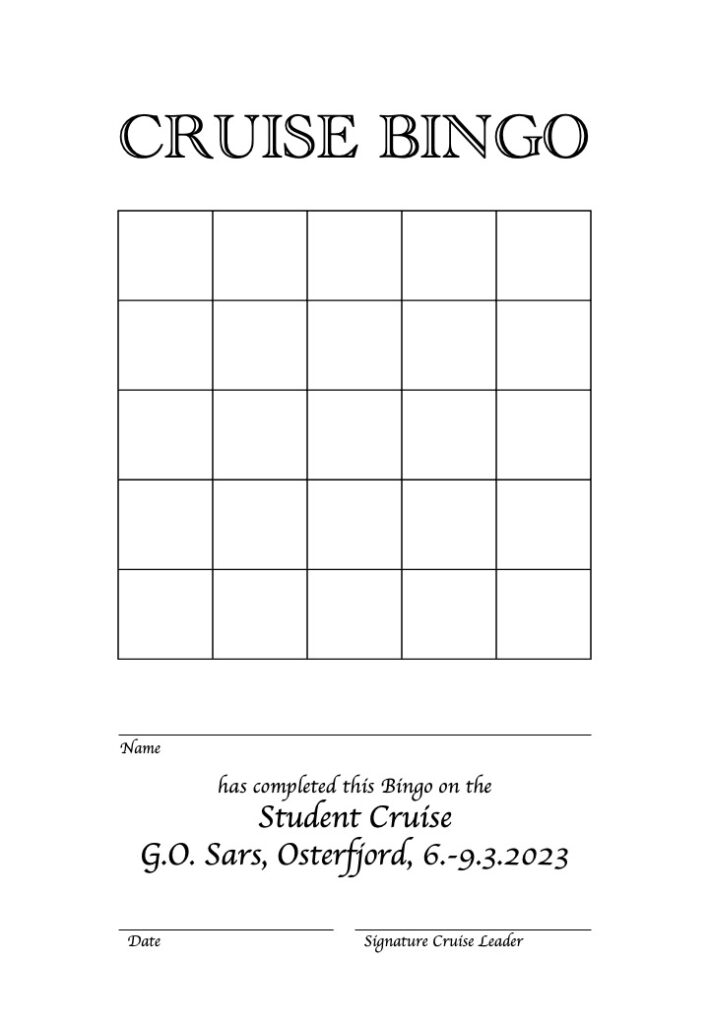
Developing a “student cruise bingo” to make learning visible & fun
I am super excited to work with Kjersti again on an upcoming student cruise next month; she is such a great teacher and it is always inspiring to observe her interactions with students! Also: We always have lots of fun ideas, and usually act on them pretty spontaneously, too. Like this one: We want to bring a “cruise bingo” with us, so here is what my current planning looks like!
The idea is not to play bingo with the most common experiences on a cruise (like a “bs bingo”), but rather to encourage students to go for some specific experiences, and to make all the learning visible that is happening on a cruise. Student cruises are not “just about the science”, there are so many other aspects (like the etiquette on a research ship) that students also need to master, but that they mostly don’t notice and hence don’t appreciate as new skills. We want to make this learning visible, and also fun (hence the gamification as “bingo”, and using fun stamps to check off what has been done — see the test of my assorted stamps above; I think I’m good…). I want to require a minimum number of “check marks” (one “bingo”? Or two? Or three?) — but provide students with many different choices of what they want to do to achieve it. Here are my current thoughts and current draft version, and I welcome any comments or feedback you might have!
There are two main considerations at this stage: First, what is supposed to go on the bingo cards i.e. what are my intended learning outcomes, and second, how do we place the learning outcomes strategically on the grid.
We have come up with a list of different topic areas for learning outcomes (including ideas from both us as teachers, and the research ship crew): Practical useful skills onboard a ship, taking measurements in oceanography & meteorology, science communication, co-creation, and, since I am there and this is my draft, a bonus topic: #WaveWatching!
We are including open “co-creation” fields so students can add things that are important to them. We’ll ask something like “what tasks would you be proud to have done on your first cruise? Maybe something that seems a bit daunting right now?” and see what they come up with. We want them to both decided as a group on some topics, as well have one individual choice.
For #WaveWatching, I am currently suggesting that “picture proof [is] required”: that is not actually about proof, but about taking pictures that can then be used for scicomm, and that they can share and discuss with curious peers & instructors. Documentation is everything!
Below is a list of suggested topics for all the 25 fields.
The color coding above is about the second aspect I am thinking about, the distribution of topics on the bingo chart. For example, I want the individual topic in the center of the grid, so it is part of the maximum number of “possible bingos” (4) to give students maximum autonomy. Then there are 8 other fields that are also more important, since they are part of 3 possible bingos: for example two on group-co-created fields (to give the group decision some weight), one on “taking a break outside and enjoying it” (cruises are exhausting and alone time is important!), one on “noticing something curious and discussing it with peers and/or instructors” (oh, how I am looking forward to responses on that one!), one on “observing a full station from the bridge” (quite educational to hear radio communications from the other side, for example!). And then 16 that are “only” part of 2 bingos each.
On the grid, I am placing all the #WaveWatching fields in the bottom row and in the column on the right edge. Originally I had thought that they could really be a bonus and we’d just make the remaining 16 fields part of the official bingo, but then that messes with my center field for individual co-creation, so I think I’ll just sponsor a special prize for people who do all the #WaveWatching fields.
Below are some examples of what I hope students might see and do (which we will show them before the cruise, since they probably haven’t learned a lot about #WaveWatching before).
Those are my plans so far. But there are a couple of things about this that I would like to discuss specifically:
- Intended learning outcomes. Those above are my first draft. What else might be (more) useful?
- Prizes. Rewards can kill of intrinsic motivation, so is it really a good idea? And if so, what should it be? My #WaveWatching book? Or a chocolate bar?
- There will be A LOT of stamping (approximately 30 students x 25 fields). Who will do that? Teachers (so we can say “good job” and have a conversation about what the students just did)? Or the students themselves? Or maybe both — teachers just sign off the chart in the end, but use the chart to talk with students whenever an opportunity presents itself?
- Evaluation of this bingo. Even though we think it is fun and should support student learning, we don’t actually know how students perceive it. What would be relevant to ask students? How do students perceive the bingo, if it is motivating them to do something that they otherwise might not have done, or if it is too kindergarten-ish for university students? What they would have wanted differently? Any other comments and suggestions they might have?
What do YOU think? I welcome any comments you might have! :)




Published now: "Activity bingo: Nudging students to make the most out of fieldwork" - Adventures in Oceanography and Teaching says:
[…] and I, together with Linda and Francesco, just published an article in Oceanography on the fieldwork bingo we developed for the student cruises earlier this year (and that came quite a long way from our first version as a postcard!). I am currently very much on […]